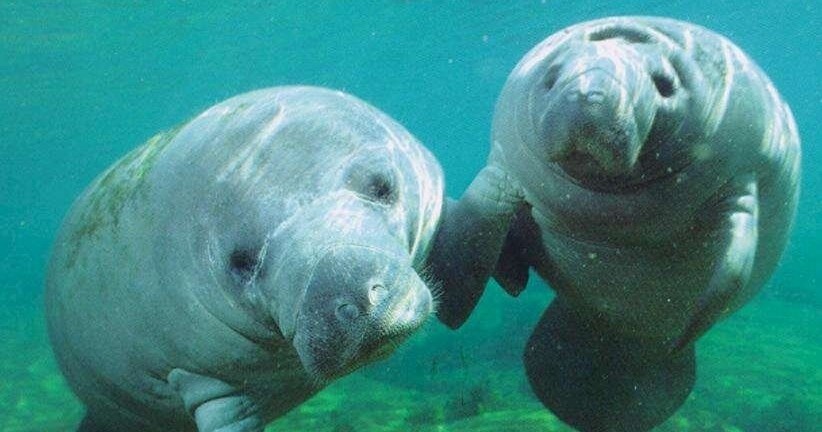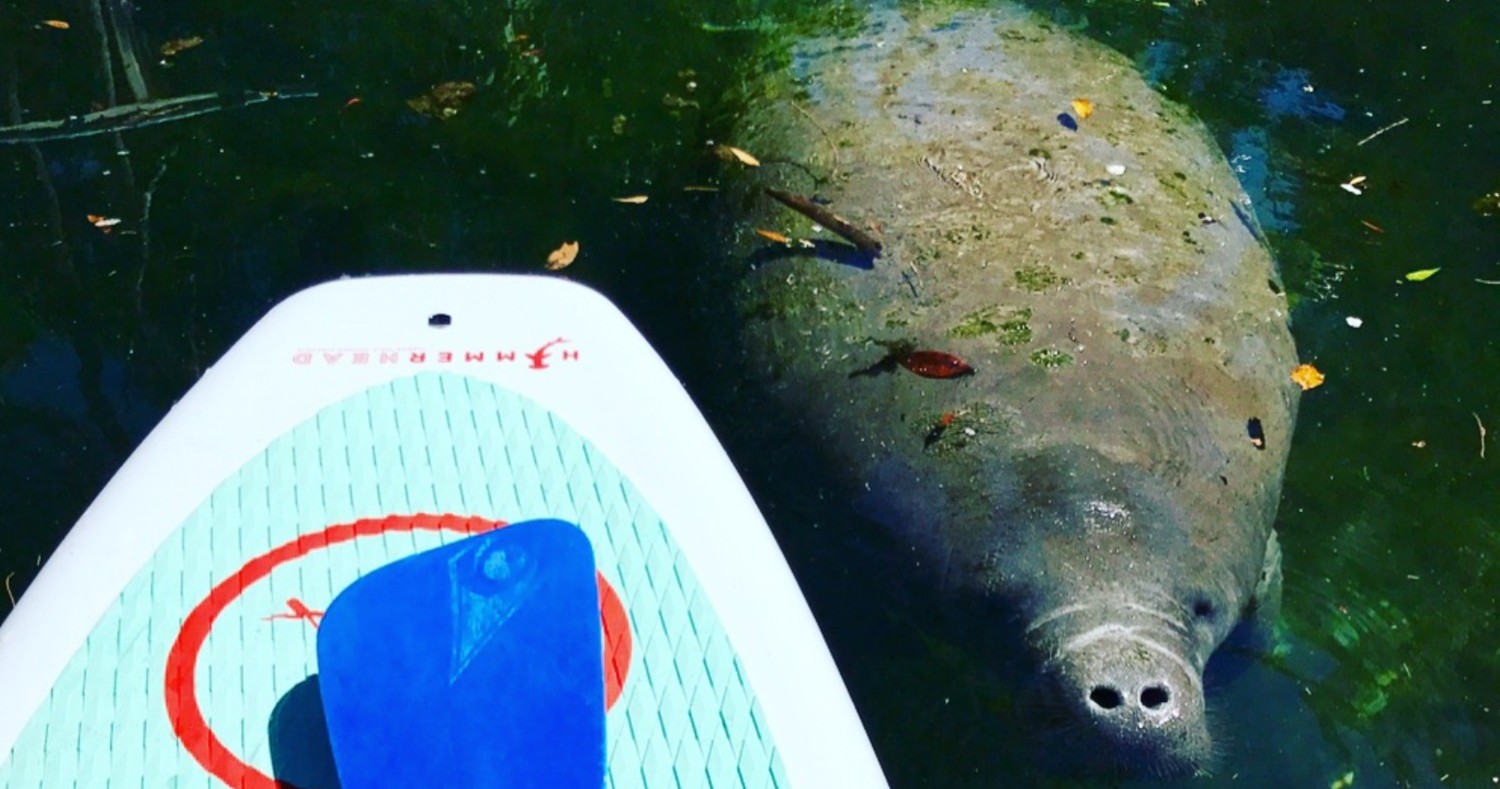WILL I SEE A MANATEE?
The peak season for observing manatees is November through April, and the local manatee population swells to its largest size between December and February. You can spot manatees in our waterways all year round, but the population is much smaller during the summer months. In the colder winter months, you are virtually guaranteed to see a manatee because there are hundreds of manatees in King’s Bay congregating near the springs. In the warmer summer months, you have roughly a 25% chance of seeing a manatee with no guarantee because most of the manatees migrate to better feeding grounds in the Gulf of Mexico and those that remain in King’s Bay are dispersed throughout the bay.
However, in the warmer months, there are still approximately 25 – 50 manatees including some mother-calf pairings that remain in King’s Bay. After the first cold front arrives usually in November, the King’s Bay manatee population increases dramatically into the hundreds congregating near the springs virtually guaranteeing a manatee encounter until the weather warms back up. We provide local knowledge of where manatee sightings are most likely to occur increasing your chances of a manatee encounter. Also, the longer you are out on the water and the more area you are able to cover, the better the chances of a manatee encounter. Therefore, a 4 hour rental helps your chances of seeing a manatee compared to a 2 hour rental.
Importantly, the beautiful and pristine Three Sisters Springs is open for paddling and snorkeling from April 1 to November 14 and for snorkeling from November 15 to March 31 making your day on the water wonderful and worthwhile with or without seeing a manatee. The Crystal River has more to offer than just manatees, so whatever the time of year we’d like to get you on the water to explore it.


THE BABY MANATEES
Female manatees usually seek quiet areas in which to give birth. In Florida, newborn calves can be seen at any time of the year, although more seem to be born in the spring and summer. Most births are of a single calf about 120 centimeters (about 47 inches) long and weighing 30 kilograms (66 pounds), although a few cases of twins have been documented. Observations of calving have shown that the offspring can be born either head- or tail-first. In the few cases in which births have been observed in captivity, the newborn calf is capable of swimming to the surface on its own, although the attentive behavior of the mother may give the impression that she is assisting the calf. Calves vocalize at or soon after birth and this is probably an important part of the mother-calf bonding process. The calf begins to nurse within a few hours after birth, and nursing frequency and duration increases as the calf becomes more proficient. Calves nurse underwater from teats located behind the mother’s flippers and begin to eat plants a few weeks after birth.
The precocious calves are able to swim with their mothers within minutes of birth. A young animal commonly remains close to its mother’s side. Adult manatees typically swim in single file, but a calf always travels parallel to its mother, directly behind her flipper. It is possible that the animals can communicate most effectively in this position, or the formation is advantageous if the calf experiences less draft from the water. Female manatees do not attack other manatees or humans that approach their young. Instead, they attempt to keep other manatees and human divers away from their calves by swimming between the intruder and their offspring. If the danger is perceived as severe, the female and calf will flee. A fleeing female/calf pair produces a duet, with one animal vocalizing and the other emitting an answering call. A manatee calf may stay with its mother for one to two years, even though it is probably nutritionally independent by the end of its first year. The calf gets information on feeding and resting areas, travel routes, and warm water refuges from its mother. From Manatees and Dugongs, 1991 by John E. Reynolds III and Daniel K. Odell.
